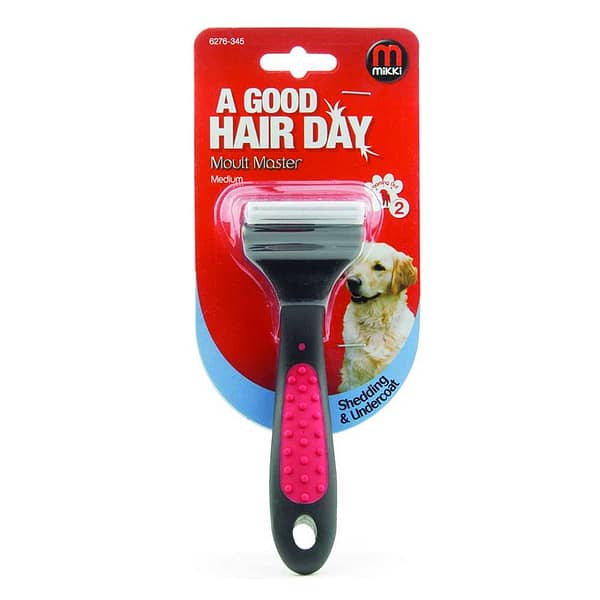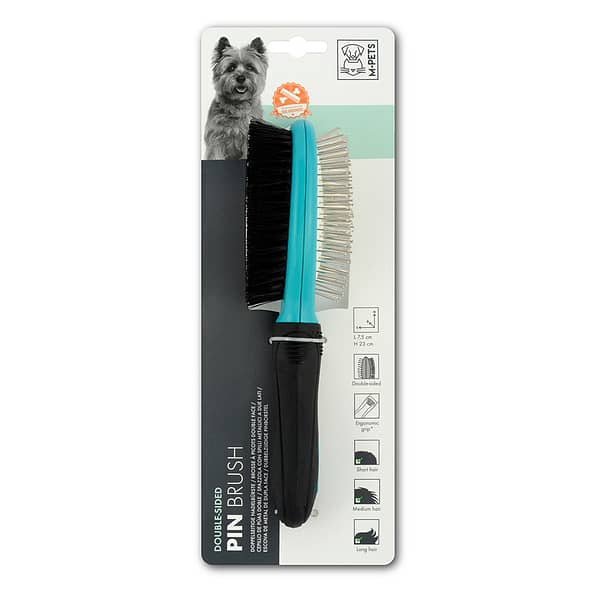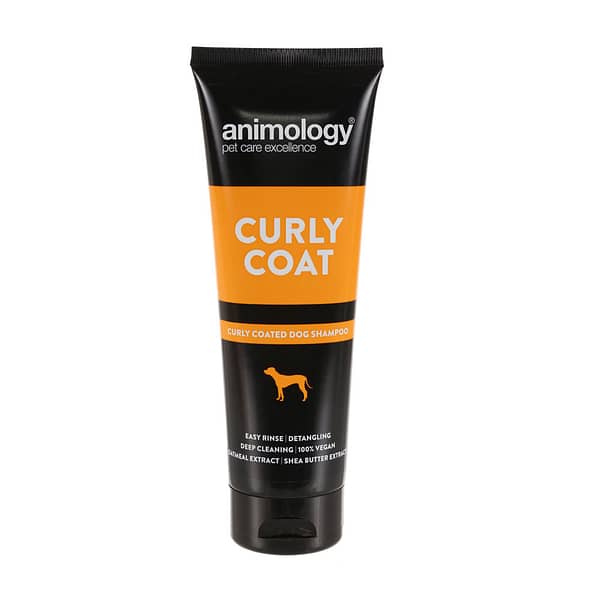One trip to the dog park or doggy daycare and you’ll instantly spot the vast differences between dogs. It’s all in the coats they wear – from long, thick double coats (think Samoyed and rough collie) to either near- or total hairlessness (think Chinese crested or American hairless terrier), and everything in between. But how many types of dog coats are there? And what does it mean in terms of their grooming requirements, daily habits and the environments they live in?
As we investigate different hair types of a dog’s coat, remember that there may also be some overlap between the coat types, especially in mixed breeds, as well as coat texture and thickness. Use this information as a guideline; treat each unique dog’s coat according to its individual needs. Let’s get skin deep on dog coats!
Dog coat anatomy (coat density)
We cannot talk about different types of dog coats without mentioning the different components to dog coats. Some dogs have a single coat made up only of a topcoat or guard hair, which can be pretty water repellent, and it shades your dog’s skin from sun and protects it from physical damage. Guard hairs are usually thicker than the fur of the undercoat, and they come in a variety of textures (which we’ll go into detail about down below).
Dogs with longer, thicker coats have a topcoat of guard hairs that is insulated by a softer undercoat. This undercoat has a downy texture and is made up of tiny hairs packed tightly together, which gives it its soft and insulating feel. This is usually the part of the coat that is shed in spring.
Single coat
Some dogs only have a single coat with no downy undercoat. Think of short-coated dogs whose hair lies flat and sleek against their body, such as:
Grooming the short single coat: Dogs with a short, flat coat need very little by way of daily grooming or maintenance. You can easily get away with a quick once-over with a short-bristled brush to remove loose hair. Ideally, a daily rub-down with a grooming mitt will ensure a clean, shiny coat. Short-coated dogs only need an occasional bath.
Then there are also dogs with longer single coats such as:
These dogs need special care and even daily grooming to keep their long, luxurious coats free of tangles. Dogs with medium-length single coats can have wiry texture, curly or wavy fur, and even what’s called a ‘corded’ coat that’s supposed to be dreadlocked to keep it healthy!
Grooming the long, silky single coat: The daily combing and de-tangling of longer single coats can be done with an anti-tangle comb, aided with a tangle removing spray. If a long-coated dog is too much daily hassle, the coat can be clipped for summer as it will just gradually grow back.
Double coat
The double coat comprises a definitive top coat (such as that of the German shepherd or border collie – instantly recognisable by the colouring and texture of the guard hair) with a soft, woolly undercoat underneath. When the seasons change from autumn to winter, you may notice your dog’s coat starting to puff up a bit – this is the undercoat that is growing thicker to provide some nice winter protection against the cold. From winter to spring, these dogs will blow their coats; meaning the extra undercoat has to come out. Commence the shedding, lots of daily brushing, and much more vacuuming than you ever anticipated in your life. The Siberian husky – some of whom may even have a triple coat – is famous for his shedding because of this feature of his coat.
Popular double-coated breeds include:
Grooming the double coat: Depending on the length of the dog’s coat, a daily to weekly brush with a slicker brush will be necessary. If your dog’s undercoat needs a lot of maintenance, the pawfect tool for this will be an undercoat rake or a moulting comb. If your dog’s undercoat is not that thick, a pin brush is a good option, as it will still get right down to the skin without hurting your dog – especially if he’s got sensitive skin.
Can you shave a double-coated dog?
A double coat can keep traditional working dogs nice and toasty in the northern hemisphere winter, but don’t they get too hot in summer? As tempting as it may be, never shave a double-coated dog, as their fur does not grow back uniformly. Sometimes their full coat of guard hair won’t grow back at all, leaving your pup with patchy fur that cannot properly perform its thermoregulation (temperature-regulating) job – meaning that he will probably overheat in summer. The double coat helps dogs to keep cool in summer too, insulating them against the heat, especially when they can lie down on a nice cool floor.
Triple coat
Thanks to the genome sequencing done on dogs for the last two decades, dog enthusiasts now know that some modern-day dogs are still influenced by their primitive ancestors’ DNA. One of these genetic characteristics – especially for Asian and European spitz-type dogs, Siberian sledding and hunting dogs, Nordic herding and guarding dogs, and Lapponian herders – is that they wear a triple coat, or what’s also called the Arctic coat. It comprises an outer coat of guard hair, an insulating undercoat, as well as a second undercoat. This third coat of fur lies very close to the skin in a fuzzy layer that makes it near impossible to see the skin itself. If you look at where these dogs originated from – in the far northern parts of Europe, Russia and Asia – it’s easy to see why they’d need an Arctic coat!
Some triple-coated breeds may include:
- Pomeranian (most spitz breeds)
- American Eskimo dog
- German spitz
As with the double coat, the triple coat should never be shaved. None the wiser, many groomers have destroyed the evolutionary power of this profuse coat to help regulate the dog’s temperature. All the triple coat needs is regular brushing with a slicker brush and careful combing to remove tangles and keep mats at bay. The most appropriate grooming tool for a really thick Arctic coat would be an undercoat rake for thick coats, as well as a slicker brush to smooth out the top coat.
Dog coat textures
Putting single, double and triple coats to one side for a moment, let’s talk about coat texture – the look and feel of the guard hair on the top coat. There are many different types of dog coat textures, so we’ll cover a few of them.
Curly coat
Curly-coated dogs have become extremely popular in the last 10 to 20 years. This type of coat texture lends the dog a type of teddy-bear cuteness that a straight coat just cannot beat. Hugely popular curly-coated dogs include the poodle (standard, miniature and toy), which has since lent his coat genes to poodle mixes like the:
- schnoodle (schnauzer x poodle)
- Labradoodle (Labrador x poodle)
- cockapoo (cocker spaniel x poodle)
- Cavapoo (Cavalier King Charles spaniel x poodle)
- Maltipoo (Maltese x poodle)
Other curly-coated dog breeds that owners have fallen in love with include:
Grooming the curly coat: It’s important to wash, dry and brush a curly coat in a way that’s appropriate to maintain the dog’s natural curls. Furtunately there are bespoke grooming tools and products to help, such as:
Wire coat
Dogs with wire coats were made to withstand harsh outdoor conditions. These coarse coats can be weatherproof, but they also helped hunting, ratting and herding dogs to prevent injuring themselves on underbrush and brambles, twigs, roots, sharp claws and teeth, and anything else that could hurt them in the field.
Wire-coated or wire-haired dogs include:
- wirehair terrier
- border terrier
- Airedale terrier
- cairn terrier
- Scottish terrier
- West Highland white terrier (Westie)
- wirehaired fox terrier
- German wirehaired pointer
- Irish wolfhound
- wire-haired dachshund
- Brussels griffon
- schnauzer
Note the prevalence of wire-coated terriers (or earth dogs), whose coarse, dirt-repellent coats are pawfectly suited to their burrowing, vermin-dispatching jobs.
Grooming the wire coat: Wire coats often do not shed and they need to be manually stripped a few times a year to maintain their coarseness. However, unless you are working or showing your wirehair breed, you don’t have to go the whole hog in terms of stripping the coat. Using wirehair-appropriate grooming tools can ensure you keep your coarse-coated dog in tip-top shape.
Matted or corded coats
Pet owners are encouraged to groom their dogs so that their fur doesn’t become tangled and matted. However, there are a handful of unique dog breeds whose ability to thermoregulate is based on their fur’s natural matting ability! The Bergamasco’s interesting fur (made up of three unique types of hair) mats together when he’s around one year old, and it needs to be ripped into doggy dreadlocks in order for his coat to take on its natural appearance.
Hungarian dogs like the Komondor (Hungarian sheepdog) and the puli have long curly coats that mat over time and need to be separated and corded for the coat to properly take shape. Once the dog looks like a giant mop (its natural, mature appearance), it needs minimal grooming. It cannot be brushed, but the cords can be washed in diluted shampoo, which must be thoroughly rinsed. The dog must be dried properly (spending hours in front of a strong fan overnight) to keep the cords healthy and clean.
Hairless dogs
Throughout the ages, some dogs have been born with a coat of fuzz, only to lose it as they mature. Hairless dogs are the result of a dominant or recessive gene for hairlessness. In cases where the hairless gene is recessive (such as in the rat terrier), most offspring may be coated, with a few inheriting two recessive genes, resulting in hairless puppies. A hairless rat terrier is named the American hairless terrier. Most hairless breeds, such as the Chinese crested, Mexican hairless dog (Xoloitzcuintli – pronounced ‘show-low-KWINT-lee’), and the Peruvian Inca Orchid are the result of a dominant gene for hairlessness.
Obviously, hairless dogs cannot be brushed, but they require a different kind of grooming. With no hair on which to distribute their skin oils, they need regular baths to clean their skin; as well as regular moisturising to keep their skin healthy. They cannot go into the sun without sunscreen, so make sure you have doggy sunscreen on hand. Some hairless dogs have problems with dentition, so they need additional dental care as well.
Step-by-step grooming for most dogs
You can find a few grooming articles on Pet Hero, including this handy step-by-step guide to dog grooming, which is great for general maintenance of your dog’s coat.

A step-by-step guide to dog grooming
As straightforward and easy as grooming may seem, there are some grooming practices that seem rather contradictory to what we may think we should do with our dogs.
What to use to groom your dog
There are so many different kinds of brushes, rakes, combs, grooming mitts and other grooming tools to make your daily or weekly task of pet grooming that much easier. For a general overview, read our article on the right tools for the job.

Here comes the groom! How to choose the right grooming tools for your pets
Pet grooming doesn’t have to be a difficult or time-consuming task. You can actually use this as valuable bonding time with your pet. Here we have some guidelines on what types of grooming tools you would need for your pet’s specific fur coat.
Pet Hero cares about you and your pets’ lifelong wellbeing, which is why we offer detailed, informative and vet-approved content on the best ways to feed, treat, walk and groom your furry friend. Sign up for the Pet Hero newsletter to get all the latest news, pet content, and access to our specials, promotions and competitions – right in your inbox!





























